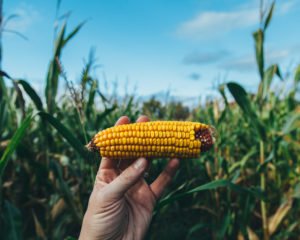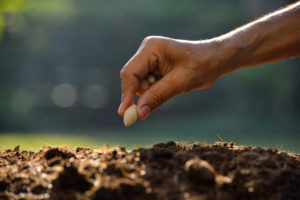Responsible for more than a third of the world’s greenhouse gases, taking up about 38 percent of global land surface, and accounting for around 70 percent of all freshwater withdrawals, our existing agricultural systems are fast becoming unsustainable. In fact, the shocking amount of resources used and waste generated in supporting the industry don’t stop there, and many experts are already suggesting that the current systems we use to produce our food, fabrics, and even fuel, are essentially broken.
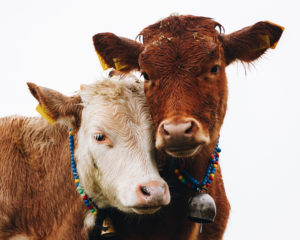
Alarmingly, despite the significant impacts the agricultural industry has on our planet, addressing the core issues underpinning those impacts is often overlooked during discussions surrounding climate change and sustainability. Arguably, this is due to ever-growing demands on food production, with industrial systems already struggling to feed the global population. However, the reality is that, by addressing existing industrial agricultural systems, we may also find solutions to a host of other climate change issues.
One way to do this is to develop a more circular system for growing crops and rearing animals. Regenerative agriculture, as opposed to industrial agriculture, offers the world an opportunity to do this, building more resilient food production systems that are good for the environment, our economy, and our bodies. But what exactly does in involve, and how can the US move away from its reliance on chemical fertilizers and carbon intensive crops?
In this article, we’ll examine our current relationship with industrial food production and how regenerative agriculture can offer us a healthier and a safer future. Read on to discover what the future of food and fabrics might look like with a more circular approach.
What is industrial agriculture?
During the 20th Century, food producers began to adopt a model of farming which is now the primary source of food across the globe. This model is known as industrial agriculture, and it was a huge departure from previous forms of farming that focused on small producers and naturally organic approaches to crop and animal care.
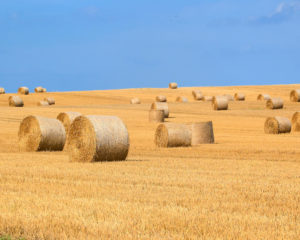
Industrial agriculture is a method of food production which seeks to maximize the amount of food and profit which can be produced per acre. Whilst efficient land use is not inherently bad, the efficiency associated with industrial agriculture is short-term, and often comes at the expense of biodiversity, human health, ecological resilience, and long-term food security, whilst also producing harmful waste products.
One key concern is the ability of industrial agriculture to deplete soil health. Due to constant tilling, harvesting, and replanting without the integration of other organic materials such as cover crops or organic waste matter, industrial agriculture drains nutrients from the soil faster than can they be replaced, and releases carbon dioxide faster than it can be sequestered. This change in land use means that croplands and pastures have released 50-70% of the carbon which they once stored, and are reliant on fertilizers in order to grow food.
The second key concern is emissions. According to the Consultative Group on International Agricultural Research, our current food system is responsible for a third of all anthropogenic greenhouse gas emissions. These are produced by the release of carbon stored in the soil alongside other heavy agricultural processes, the production of fertilizer, and the refrigeration of food products. As such, high-emission food production provides us with food in the short term but acts as a significant contributor to climate change in the long term.
A third key concern is the threat which industrial agriculture presents to biodiversity. Our industrial agricultural system is largely used to produce a small number of plants and animals, such as corn, soy and beef. When naturally biodiverse spaces are transformed into pasture land or single-crop fields (it’s common practice for a corn field to be as large as 600 acres) the other plants, animals and microorganisms which lived there previously are displaced or die.
This is exacerbated by the use of fertilizer and pesticides which can leach into local waterways and produce dead spots as well as killing pollinators. The loss of biodiversity is not only inherently bad for the threatened species, but also threatens us—as we become reliant for food upon fewer crops and animals, we become increasingly vulnerable to changes in climate which render those food sources untenable.
Industrial agricultural processes and their waste products are harming our environment, whilst failing to offer us long-term food security. This is, reasonably, a real cause for concern. However, it’s not all doom and gloom, and whilst these practices may not serve us well, there is a solution which is actively good for the environment and allows us to grow our food closer to home. This is where regenerative agriculture steps in.
What is regenerative agriculture?
Regenerative agriculture is described by Sustainable America as “a set of agricultural practices that focus on the health of the ecological system as a whole, not only on high production yields of crops”. This holistic approach recognizes that ecosystem health is central to a thriving system of food production, and subsequently works to actively improve ecological health using a number of indicators, such as biodiversity, soil quality, and the ability of the land to sequester carbon.
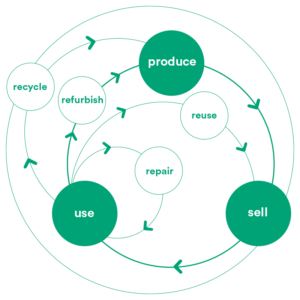
Source: rts.com
Regenerative agriculture is a relatively new term, so there is no formal regenerative agriculture definition. However, it is generally associated with the indicators identified above, as well as with a range of practices, such as crop rotation, no-dig or low-tillage methods, and the use of waste, such as animal feces and dead plant matter, as a resource.
In this capacity, regenerative agriculture has strong ties to the zero-waste movement and the circular economy; both of which also support the environment and the economy through the transformation of waste into new resources.
Regenerative agriculture is also often associated with organic agriculture, though the two systems don’t necessarily overlap. This is because organic agriculture must meet specific standards established by the U.S Department of Agriculture (USDA). Regenerative Organic Certified are working to establish an official certification which combines the two systems by establishing criteria for regenerative organic agriculture. These criteria revolve around soil regeneration, animal welfare, and social fairness. Whilst they are an excellent framework, they are not yet federally enforced standards for regenerative organic agriculture.
What are the benefits of regenerative agriculture?
The World Economic Forum describes the benefits of regenerative agriculture as “basically endless”, though there are some clearly identifiable positives to the practice.
The first major benefit is the role that regenerative agriculture plays in carbon sequestration. Utilizing practices such as reduced tillage, alongside using compost and other organic materials rather than fertilizer, regenerative agriculture actively increases rather than depletes the organic makeup of soil. This increases the soil’s capacity to sequester carbon. Not only does the soil itself draw carbon, but when plants are able to photosynthesize and exchange nutrients naturally, rather than through the use of fertilizer, the plants themselves draw further carbon from the air, and bind it to the soil.
Due to this process, the Rodale Institute estimates that if all global croplands and pastures were managed using regenerative agriculture, the soil could sequester more than 100% of our current annual CO2 emissions. High-quality soil is also better able to hold and store water, which reduces the demand for artificial irrigation, and improves ecological resilience to drought.
The second major benefit is the opportunity to create healthier ecosystems. There are many ways in which industrial agriculture creates threats to our global ecosystems, from the build-up of dangerous conditions when livestock are kept in closed spaces and fed antibiotics, to the aforementioned loss of biodiversity with the development of monocultures.
In contrast, regenerative agriculture design is inspired by, and seeks to recreate, healthy ecosystems, which are treated as a prerequisite of effective food production. In practice, this may look like the rotation of livestock through fallow cropland. Compared to industrial agriculture, this practice simultaneously improves the living conditions of the livestock and transforms their feces from a source of toxic waste into a natural fertilizer.
The third major benefit is that regenerative agriculture makes food production more accessible, and less dependent on access to capital. Industrial agriculture requires access to resources such as fertilizer, machinery, labor, and large quantities of land in order to function. In contrast, regenerative agriculture projects can be started wherever seeds can be put into the ground.
This means that regenerative agriculture can be brought almost anywhere to help tackle food security issues, as with the right knowledge, any vacant land can be revitalized over time and used to produce food. This makes regenerative agriculture a vital tool in fighting certain manifestations of environmental injustice, such as food deserts.
 Regenerative agriculture and fashion.
Regenerative agriculture and fashion.
The benefits of regenerative agriculture are not only limited to the food industry, but rather, any industry which relies on natural produce. A key example is the impact that regenerative agriculture can have on the textile and fashion industries, which have a severe environmental impact. For example, it takes approximately 7,000 gallons of water to produce one cotton shirt; most of which comes from the process of growing the cotton.
For many environmentally conscious fashion companies, regenerative agriculture may be the best way to sustainably continue producing clothes. Companies such as the North Face, Patagonia and Gucci are already partnering with and investing in regenerative agriculture practitioners as a means of sustainably sourcing their cotton.
What does regenerative agriculture look like in practice?
There are already plenty of different regenerative agriculture practices, from aquaculture to syntropic agroforestry. Whilst the inputs and outputs of each regenerative agriculture practice can vary based on climate, available resources and human needs, there are several elements which are frequently present between the different types of regenerative agriculture.
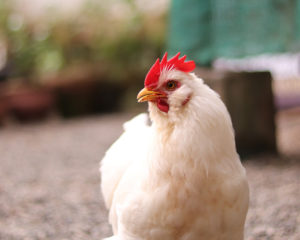
One of these is the interaction of different plants and animals in one growing space. This can mean stacking plants to provide shade, allowing chickens to forage in your planting space, or encouraging the growth of biodiverse shrubby borders.
Another is the use of “waste” as a new resource. This might mean using the heat produced by chickens to warm a greenhouse, using fish feces as nutrients for water plants, or using excess leaves and branches as groundcover and to encourage the growth of fungi.
However, the key shared element is a holistic design practice which works to operate in relation to pre-existing environmental conditions. This means that the strongest shared trait between regenerative agriculture applications is also the source of the diversity between them.
What is the future of regenerative agriculture?
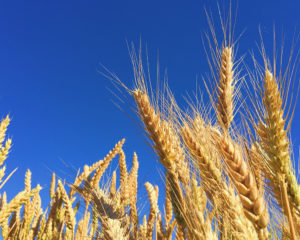 There are, unfortunately, some obstacles which make it relatively easier to establish an industrial agriculture project than a regenerative one. For example, in the US, federal agricultural policy subsidies favor the production of large monocultures. Regenerative agriculture can also be more labor intensive, as harvesting from a stratified garden composed of different plants can require greater attention to detail than harvesting from a corn field of several square kilometers.
There are, unfortunately, some obstacles which make it relatively easier to establish an industrial agriculture project than a regenerative one. For example, in the US, federal agricultural policy subsidies favor the production of large monocultures. Regenerative agriculture can also be more labor intensive, as harvesting from a stratified garden composed of different plants can require greater attention to detail than harvesting from a corn field of several square kilometers.
However, as stated before, less capital is required to implement regenerative agriculture, and as consumers become increasingly conscious of the environment, greater government assistance may follow. Moreover, with exciting sites such as SharedEarth, which can connect aspiring gardeners to the owners of uncultivated land, regenerative agriculture offers plenty of opportunity to drive the guerilla gardening revolution.
Finally, It’s not just agriculture which is going regenerative; across the US and the rest of the world, we are able to see more and more examples of industry and infrastructure going sustainable and circular. Excitingly, it looks as though these sustainable business trends are on the rise.
If you want to start integrating your own business into the circular economy, then you should check out the other articles on the RTS blog for more information and guidance. You can even start today, by signing up for a free waste assessment.


